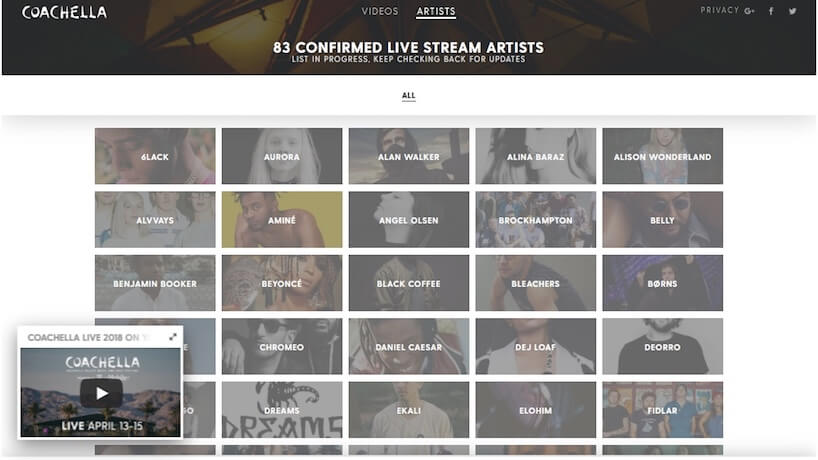With a lineup that features Beyoncé, The War on Drugs, Post Malone, and other chart-topping artists, it’s no surprise that tickets for the Coachella Valley Music & Arts Festival sold out in three hours. For fans who weren’t lucky enough to make their way through the virtual line, the next-best option — which also happens to be much more affordable — is the festival’s live-stream. YouTube has been broadcasting the festival for the past eight years, and in 2018, the coverage from April 13–15 continued to get better with virtual-reality options and a Google Home integration that gave at-home fans some fun voice-recognition capabilities during the shows. While your next program may not feature Grammy-winning acts on stage, the festival’s approach to online engagement offers some valuable lessons for digital events.
1) Customization Is Key.
With Netflix, Hulu, and on-demand everything, viewers are accustomed to choosing their own adventures on their screens. YouTube’s broadcast takes a cue from the watch-whatever-you-want approach with four different live-stream feeds. Before the broadcast began, at-home fans could create customized viewing schedules with the bands they wanted to see. Rather than sorting through the feeds to determine the appropriate channel, the streams automatically shifted to the pre-selected show.
For business events with hundreds of educational sessions, this kind of personalization is a crucial component for the remote-viewing experience. Just as music fans have personal tastes, conference attendees care about specific topics and speakers. If your platform can increase the number of choices, you might be able to increase the number of attendees, too.
2) Information Is Everything.
The at-home audience couldn’t anonymously personalize those schedules, though. In order to enjoy the best viewing experience, viewers had to create accounts on Coachella’s official website. That kind of information can pave the way to customized marketing messaging for future festival announcements and offer insights into which artists attracted the most online attention.
Conference organizers don’t need reminders about the value of information. Data has been a hot topic for years. Still, many events struggle to leverage all that knowledge in their marketing campaigns. Imagine creating customized messaging for the past year’s attendees based on the sessions they watched or the speakers they rated highest. Instead of sending laundry lists of sessions with content that doesn’t matter to segments of prospective attendees, those emails can focus on five topics that are most likely to resonate with each attendee’s viewing and participation behaviors.
3) Don’t Give Everything Away.
Coachella’s schedule stretches over two weekends, but the live broadcast was only available during the first weekend. A taste of the experience may create just enough FOMO for fans to book a flight to California and see the action in person. It won’t be cheap, though. Tickets on the secondary market start at $400.
Coachella is a role model in the festival world. Want a lesson in what not to do from a music event? Check out this article on last year’s unforgettable Fyre Festival event-planning disaster.

